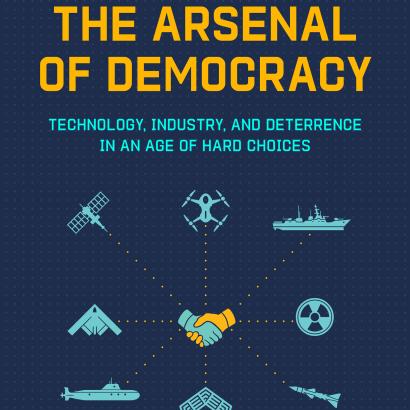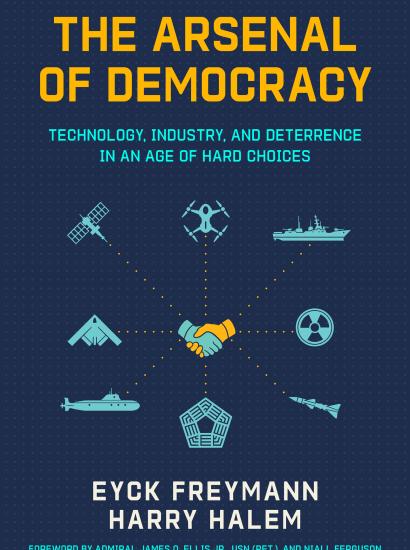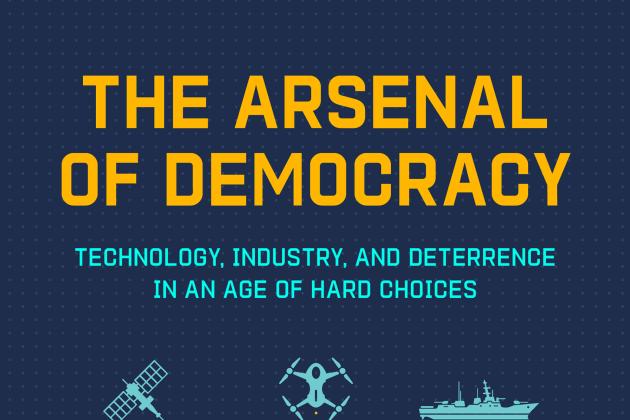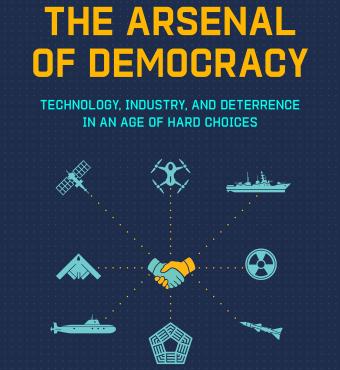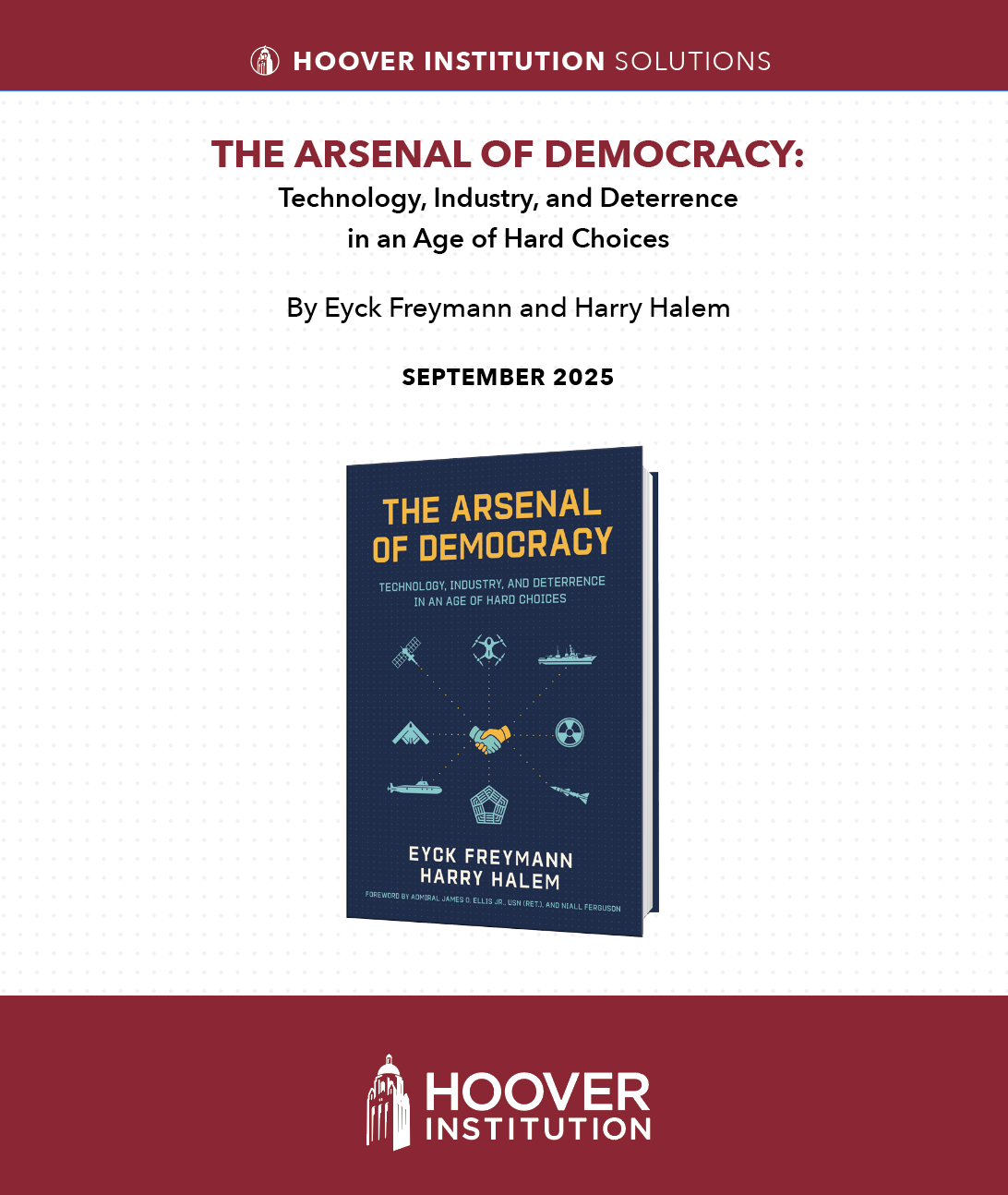- Security & Defense
- US Defense
- China
- Confronting and Competing with China
Publication Date: November 1, 2025
The US military stands at a moment of profound risk and uncertainty. China and its authoritarian partners have pulled far ahead in defense industrial capacity. Meanwhile, emerging technologies are reshaping the character of air and naval warfare and putting key elements of the US force at risk. To prevent a devastating war with China, America must rally its allies to build a new arsenal of democracy. But achieving this goal swiftly and affordably involves hard choices.
The Arsenal of Democracy is the first book to integrate military strategy, industrial capacity, and budget realities into a comprehensive deterrence framework. While other books explain why deterrence matters, this book provides the detailed roadmap for how America can actually sustain deterrence through the 2030s—requiring a whole-of-nation effort with coordinated action across Congress, industry, and allied governments.
Rapidly maturing technologies are already reshaping the battlefield: unmanned systems on air, land, sea, and undersea; advanced electronic warfare; space-based sensing; and more. Yet China’s industrial strengths could give it advantages in a protracted conflict. The United States and its allies must both revitalize their industrial bases to achieve necessary production scale and adapt existing platforms to integrate new high-tech tools.
Chapters explore the key domains of modern military power, including:
- Scouting, which will determine success or failure in any US-China war
- Logistics, the greatest vulnerability in US force posture
- Munitions and drones, which the allies must produce at scale
- The fleet, which is racing to stay relevant against fast-evolving threats
- The defense industrial base, which allied nations should reform and rebuild together
- Space and nuclear, where emerging technologies are shifting the strategic balance
The book concludes with a call for urgent action. Unless policymakers recognize the scale of the challenge and take decisive steps to modernize US force structure and procurement processes, deterrence could fail—leading to potentially the most catastrophic conflict in modern history. This balanced, comprehensive, and actionable book is the essential implementation guide for policymakers, defense officials, investors, and strategists.
Chapter 2: Surveillance And Reconnaissance
Chapter 6: The Defense Industrial Base








